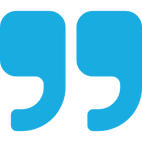



Part 3: Inquire, Plan, Act, Reflect
There are many different models for professional inquiry. Some have more steps or different names than our model. Any process works as long as it meets these requirements:
-
The process is iterative and ongoing
-
"Failure" is expected
-
Decisions are made with a variety of data (observation, discussion, products) and do not rely solely on test data and standardized forms
-
The learning meets YOUR needs, and your students needs
-
You collaborate with colleagues
-
The action (and learning) happens in the classroom
-
Self-reflection (metateaching) is ongoing and shared
-
The process is not required, marked, evaluated or orchestrated by administration or the district (although they can support your efforts and your focus should align with system/school goals)

As educators persist in questioning what works and what does not work, as they investigate the “why” behind results and reflect on potential changes to practice, they engage in the “creative interaction between the professional educator and the students’ needs” (Hannay, Wideman, & Seller, 2010). They come to understand that education is in and of itself inquiry, and that their explorations and experimentations are a form of research, rooted in the learning experience.
Dynamic Learning Connecting Student Learning and Educator Learning

Next Steps
In this section we explore how you can redesign and transform your instructional practice through the intentional application of UDL. Rather than present one lesson (as we did in the first edition), we’ll dive into a variety of ways you can build upon the goal of becoming an inclusive educator.
Our hope is you’ll take the examples in the following chapters as inspiration to help you get started, sustain the changes you’ve made, and continuously find new ways to improve your practice. The UDL Planning Guide provides UDL-focused strategies to flesh out the actionable aspects of to help you develop sustainable habits. We encourage you to take small steps as you build your habits.
In the following chapters, we use of the UDL Planning guide to explore changes to your practice. Each chapter will focus on one category from the guide and provide a variety of ideas and suggestions for implementation to help get you started, whether you are at the Wade In, Shallow Swim, or Deep Dive level. In alignment with the UDL Planning Guide, the chapters will focus on:
-
Chapter 7: Becoming an Inclusive Educator
-
Chapter 8: Flexible Instructional Design (UDL Access Layer)
-
Chapter 9: Deep Inquiry and Understanding (UDL Build Layer)
-
Chapter 10: Ownership of Learning (UDL Internalize Layer)
Professional Learning is grounded in inquiry. IPAR - Inquire, Plan, Act and Reflect - is an iterative process you can use with colleagues to explore UDL in authentic, "real-classroom" ways to effect change. No workshop required. #DiveIntoUDL


